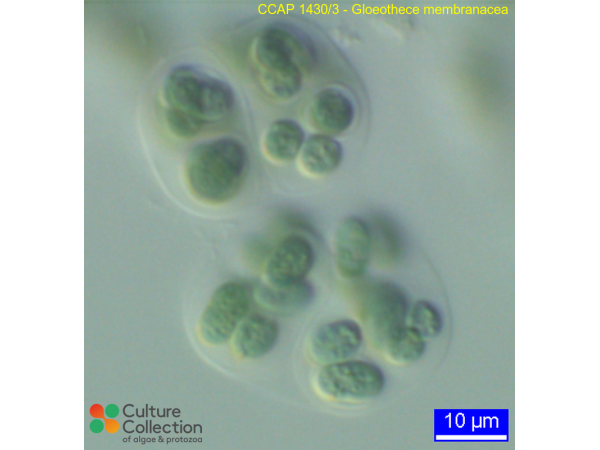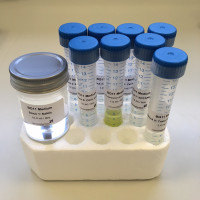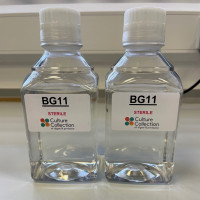References [ 19 ]
Flynn KJ & Gallon JR (1990) Changes in intracellular and extracellular a-amino acids in Gloeothece during N2-fixation and following addition of ammonia. Archives of Microbiology 153: 574-579.
DOI: none
Khamees HS, Gallon JR & Chaplin AE (1987) The pattern of acetylene reduction by cyanobacteria grown under alternating light and darkness. European Journal of Phycology 22: 55-60.
Mullineaux PM, Chaplin AE & Gallon JR (1983) Synthesis of nitrogenase in the cyanobacterium Gloeothece (Gloeocapsa) sp. CCAP 1403/3. Journal of General Microbiology 129: 1689-1696.
DOI: none
Thomas JH, Mullineaux PM, Cronshaw AD, Chaplin AE & Gallon JR (1982) The effects of structural analogues of amino acids on ammonium assimilation and acetylene reduction (nitrogen fixation) in Gloeocapsa (Gloeothece) sp. CCAP 1430/3. Journal of General Microbiology 128: 885-893.
DOI: none
Gallon JR (1978) Calcium and nitrogen fixation by Gloeocapsa. Ecological Bulletins 26: 60-68.
DOI: none
Mohsenpour SF, Richards B & Willoughby N (2012) Spectral conversion of light for enhanced microalgae growth rates and photosynthetic pigment production. Bioresource Technology 125: 75-81.
Gallon JR, Perry SM, Rajab TMA, Flayeh KAM, Yunes JS & Chaplin AE (1988) Metabolic changes associated with the diurnal pattern of N2 fixation in Gloeothece. Journal of General Microbiology 134: 3079-3087.
DOI: none
Tease BE & Walker RW (1987) Comparative composition of the sheath of the cyanobacterium Gloeothece ATCC 27152 cultured with and without combined nitrogen. Journal of General Microbiology 133: 3331-3339.
DOI: none
Mohsenpour SF & Willoughby N (2013) Luminescent photobioreactor design for improved algal growth and photosynthetic pigment production through spectral conversion of light. Bioresource Technology 142: 147-153.
Zehr JP, Wyman M, Miller V, Duguay L & Capone DG (1993) Modification of the Fe protein of nitrogenase in natural populations of Trichodesmium thiebautii. Applied and Environmental Microbiology 59: 669-676.
DOI: none
Rippka R, Deruelles J, Waterbury JB, Herdman M & Stanier RY (1979) Generic assignments, strain histories and properties of pure cultures of cyanobacteria. Journal of General Microbiology 111: 1-61.
Mullineaux PM, Chaplin AE & Gallon JR (1980) Effects of a light to dark transition on carbon reserves, nitrogen fixation and ATP concentrations in cultures of Gloeocapsa (Gloeothece) sp. 1430/3. Journal of General Microbiology 120: 227-232.
Zehr JP, Mellon MT & Hiorns WD (1997) Phylogeny of cyanobacterial nifH genes: evolutionary implications and potential applications to natural assemblages. Microbiology 143: 1443-1450.
Tözüm SRD & Gallon JR (1979) The effects of methyl viologen on Gloeocapsa sp. LB795 and their relationship to the inhibition of acetylene reduction (nitrogen fixation) by oxygen. Journal of General Microbiology 111: 313-326.
Mullineaux PM, Gallon JR & Chaplin AE (1981) Nitrogen fixation in cultures of the cyanobacterium Gloeocapsa (Gloeothece) sp. 1430/3 incubated in the dark. Journal of General Microbiology 124: 141-146.
Pereira S, Micheletti E, Zille A, Santos A, Moradas-Ferreira P, Tamagnini P & De Philippis R (2011) Using extracellular polymeric substances (EPS)-producing cyanobacteria for the bioremediation of heavy metals: Do cations compete for the EPS functional groups and also accumulate inside the cell? Microbiology 157: 451-458.
Gallon JR & Hamadi AF (1984) Studies on the effects of oxygen on acetylene reduction (nitrogen fixation) in Gloeothece sp. ATCC 27152 Journal of General Microbiology 130: 495-503.
Mohsenpour SF & Willoughby N (2016) Effect of CO2 aeration on cultivation of microalgae in luminescent photobioreactors. Biomass and Bioenergy 85: 168-177.
Stebegg R, Schmetterer G & Rompel A (2019) Transport of organic substances through the cytoplasmic membrane of cyanobacteria Phytochemistry 157: 206-218.




